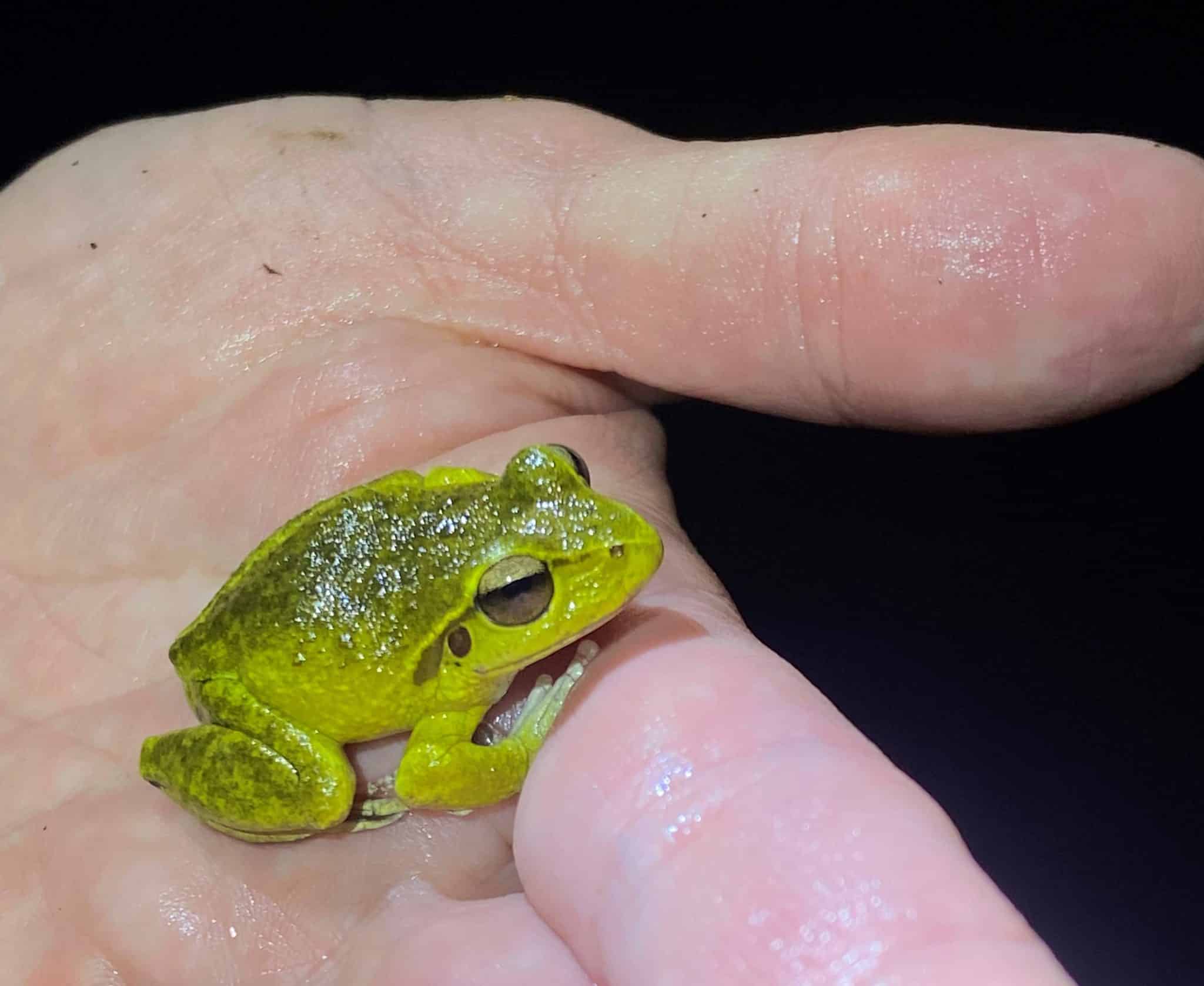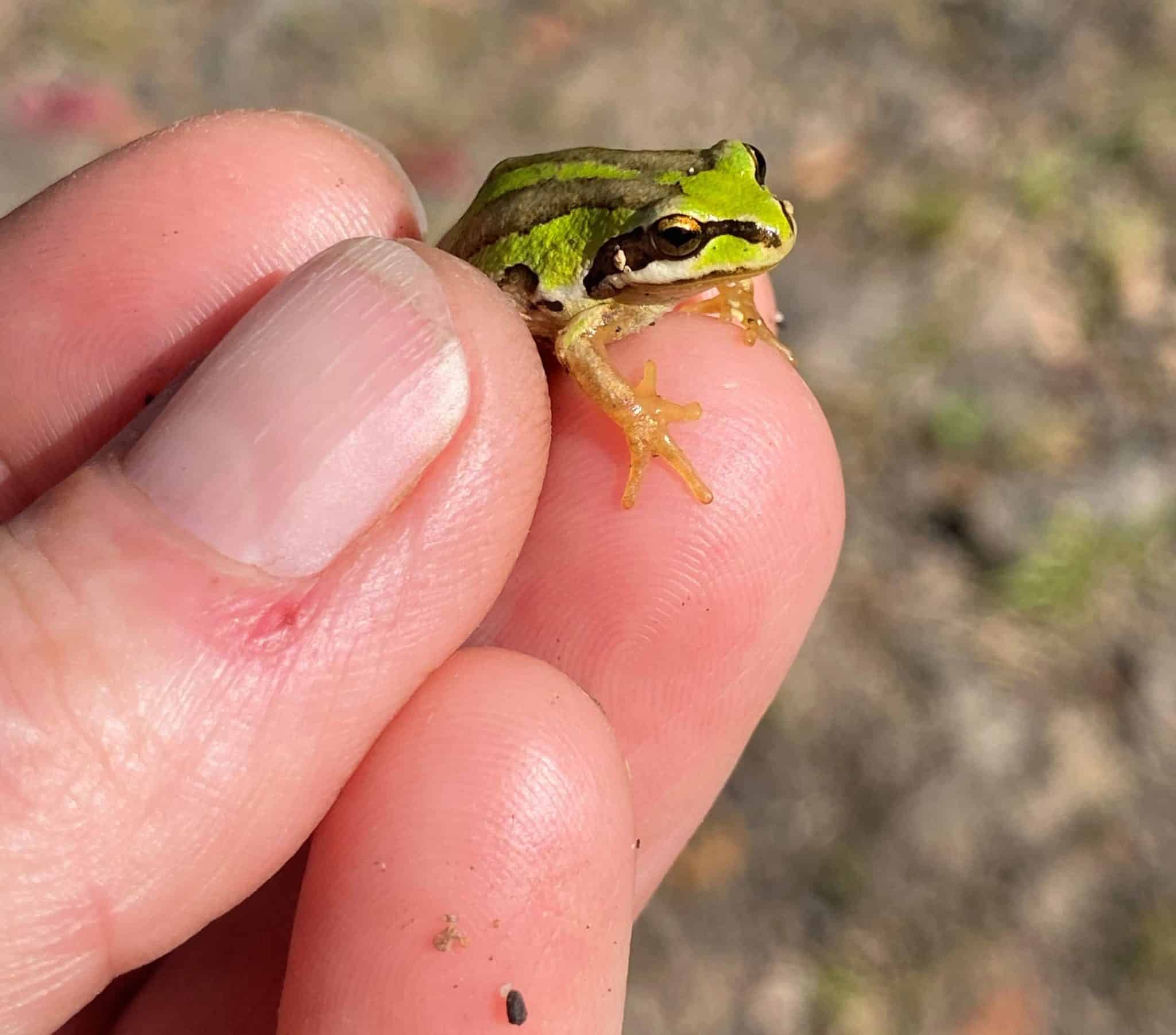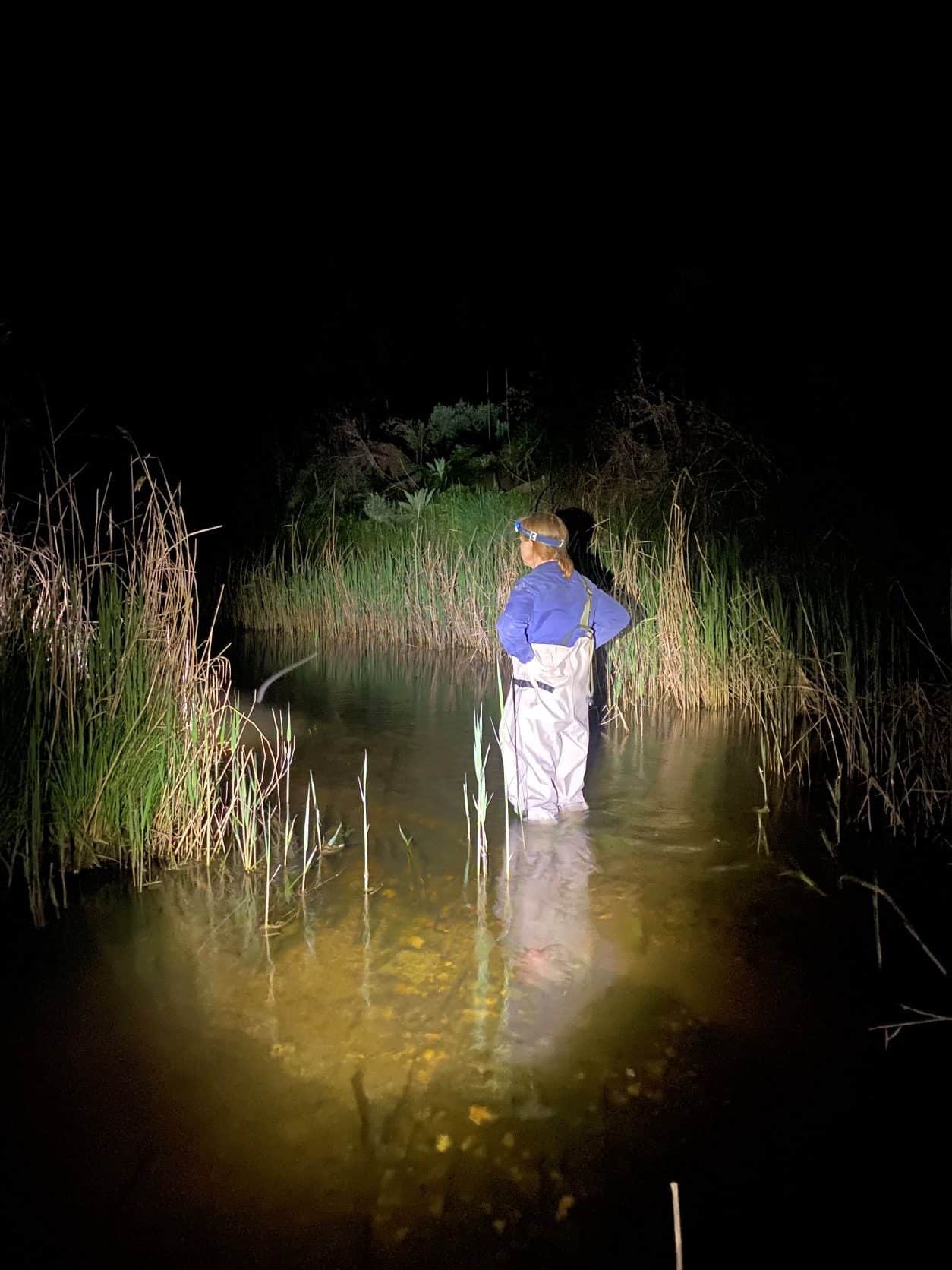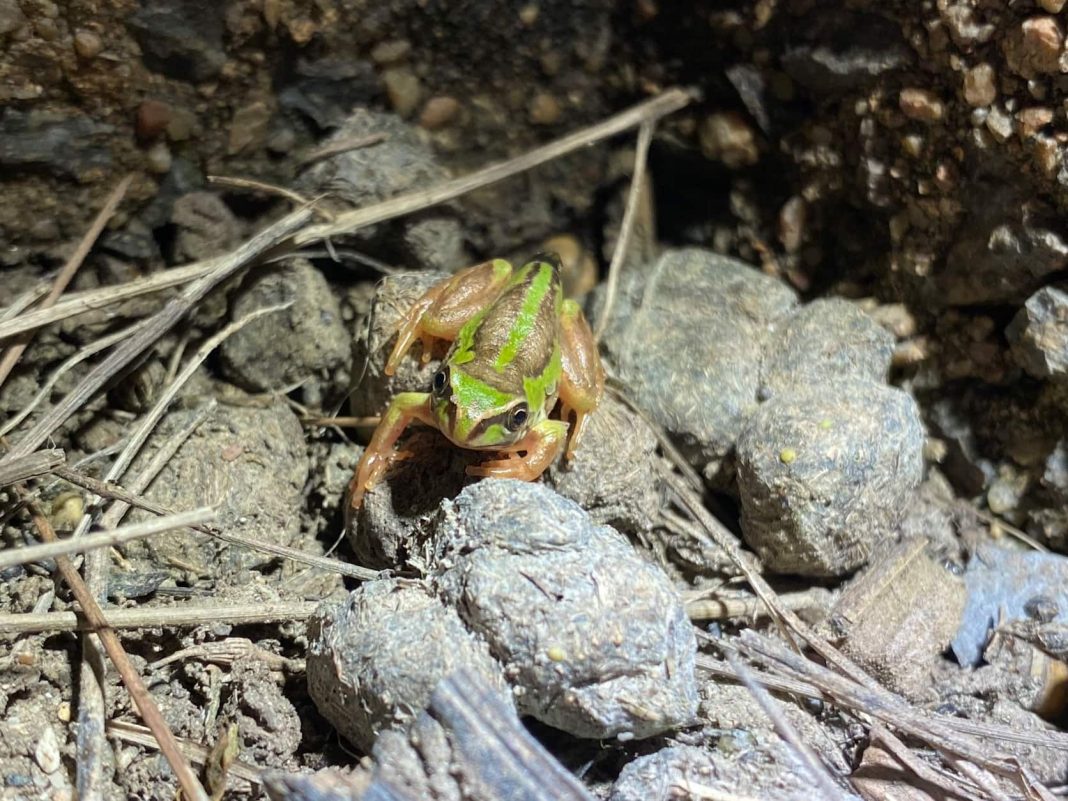Conservation outcomes for Frogtober 2022 are on track to be bigger and better than ever thanks to a wealth of new native frog data produced by Ginninderra Catchment Group’s Frogs from the Ashes project.
Funded by the Landcare Led Bushfire Recovery Grants program and following extensive destruction of frog habitat by the Orral Valley Fire, the project saw 10 avid frogwatchers undertake 34 biodiversity surveys during the 2021/22 breeding season.
“Frogs have been recognised as the most endangered animal group worldwide, and the rapid declines in frog populations and resultant mass extinctions are one of the greatest threats to our biodiversity. It was obvious to us that their survival had to be top of the agenda following the fires,” said Anke Maria Hoefer, ACT and Region FrogWatch Coordinator at Ginninderra Catchment Group.
“Historically, there has been a really limited understanding of frog species’ responses to fire, so the data from this project has been invaluable. Before the fires, both Dendy’s toadlet and Bibron’s toadlet had been experiencing long-term population declines and we needed to find out if they had survived and locate any remnant populations.”



Photos: Anke Maria Hoefer.
By using Frogwatch’s award-winning model of engaging citizen scientists in cost-effective conservation research, the project successfully established post-bushfire baseline data at 12 new survey sites including at Bogong Creek, Mount Clear and DeSalis Swamp. But the project wasn’t always smooth sailing with site access affected by remoteness, erosion and difficult weather conditions.
“Some of our sites were very remote with access posing considerable risks and requiring very high levels of fitness and endurance. We had volunteers hiking and taking 30km mountain bike rides to get out there, but it was all worth it when they were able to spot some of the frogs,” Ms Hoefer said.
“While we had some great sightings of species including the Eastern Banjo Frog and Whistling Tree Frog, unfortunately we weren’t able to find any signs of Dendy’s toadlet or Bibron’s toadlet. Hopefully we’ll have some more positive news this year; I know all our frogwatchers will be keeping an eye out. We might have to establish a special taskforce to detect these rare and hard to find species outside of the FrogTober surveys.”
With the findings now integrated into this month’s FrogCensus, Landcare ACT CEO Karissa Preuss said she was impressed with the results.
“The Frogs from the Ashes project is a great example of how Landcare projects deliver long-lasting environmental impact that help prepare us for future natural disasters,” said Ms Preuss.
“The success of this project isn’t just in its environmental benefits but in the positive outcomes for volunteers. The feedback we’ve received really reflects what a recent study by the University of Melbourne has suggested: Landcare-led projects support fire-affected communities to build resilience and stronger connections.
“The fantastic accomplishments of the Ginninderra Catchment Group, its partners and the wider Landcare Led Bushfire Recovery Grants Program have highlighted the value of local environmental protection projects in supporting the recovery of bushfire-affected communities and environments. The success of this Landcare-led model shows our movement is well placed to be on the front lines when tackling future natural disasters,” said Ms Preuss.
Canberra Daily is keen to hear from you about a story idea in the Canberra and surrounding region. Click here to submit a news tip.



